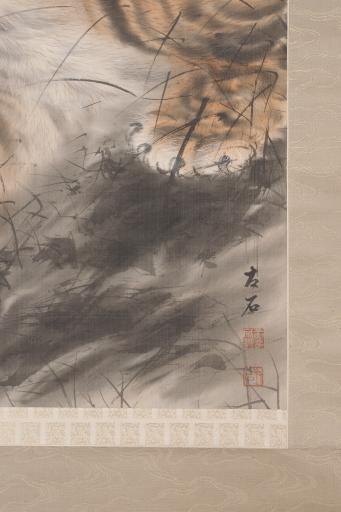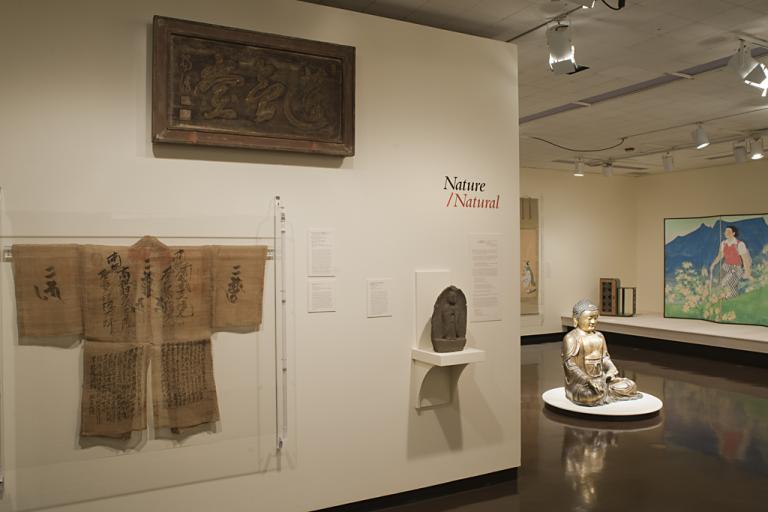Tiger, Hwang Jong-ha
Artwork Overview
Hwang Jong-ha, artist
1887–1952
Tiger,
circa 1930s
Where object was made: Korea
Material/technique: colors; ink; silk
Dimensions:
Image Dimensions Height/Width (Height x Width): 123.1 x 51.1 cm
Image Dimensions Height/Width (Height x Width): 48 7/16 x 20 1/8 in
Mount Dimensions (Height x Width x Depth): 198 x 65.5 cm
Mount Dimensions (Height x Width x Depth): 77 15/16 x 25 13/16 in
Roller Dimensions (Width x Diameter): 28 x 1 3/16 in
Image Dimensions Height/Width (Height x Width): 123.1 x 51.1 cm
Image Dimensions Height/Width (Height x Width): 48 7/16 x 20 1/8 in
Mount Dimensions (Height x Width x Depth): 198 x 65.5 cm
Mount Dimensions (Height x Width x Depth): 77 15/16 x 25 13/16 in
Roller Dimensions (Width x Diameter): 28 x 1 3/16 in
Credit line: Museum purchase
Accession number: 2011.0020
Not on display
If you wish to reproduce this image, please submit an image request






